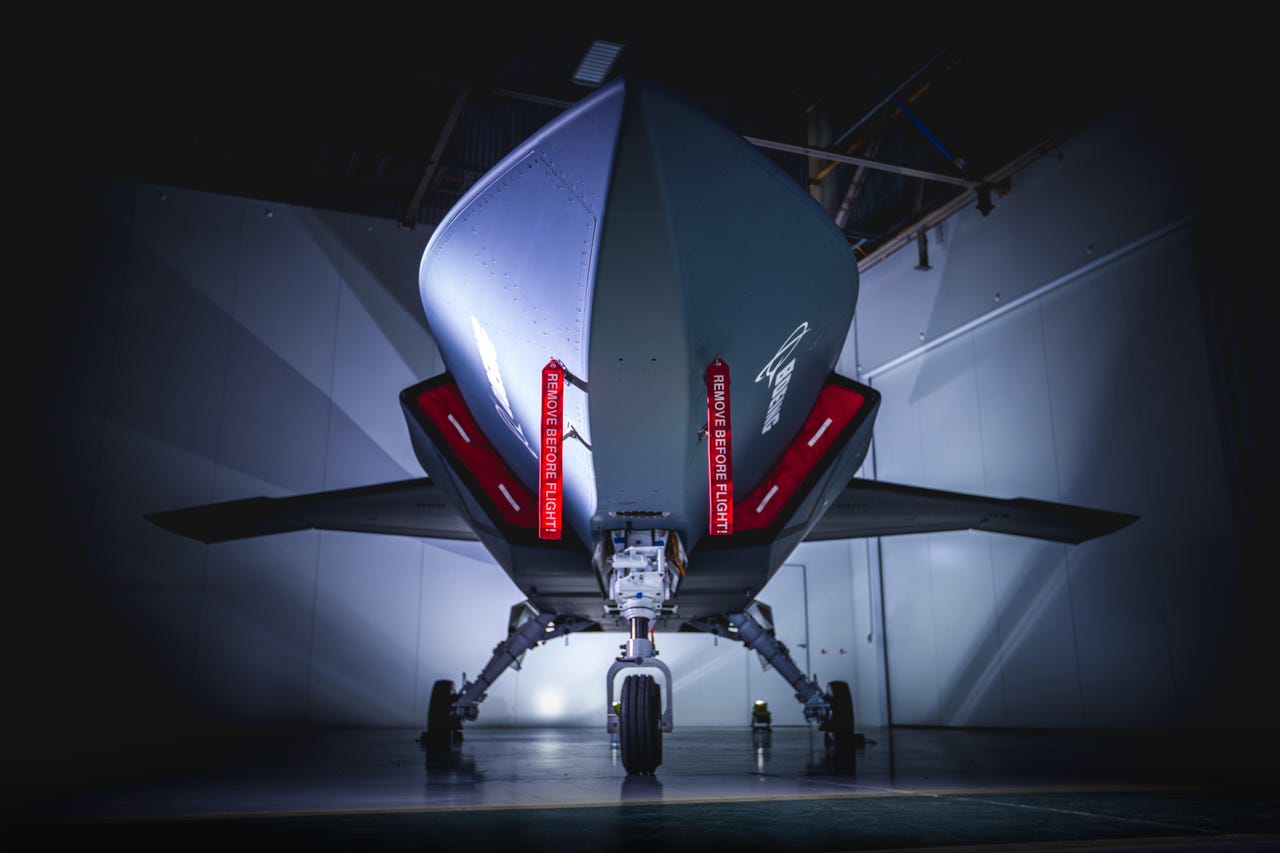Australian Defence tech strategy aims up at eight Star Shots


A Loyal Wingman drone
The Defence Science and Technology group within the Australian Defence Force (ADF) has released its strategy for 2030, which focuses on eight strategic projects aimed at maintaining Australia's technological edge in the region.
The projects, collectively dubbed Star Shots, are intended to have the "scale and impact" of Australia's over-the-horizon Jindalee Operational Radar Network, be aligned to future ADF priorities, and have a 3-star sponsor.
"This strategy introduces a new concept – Star Shots [science, technology and research shots] – that will concentrate strategic research efforts on a smaller number of bigger, specific and challenging problems," the strategy says.
"They represent the most challenging, high impact capabilities that are best solved through S&T. Importantly, each Star Shot will be established with a developed path for introduction into service."
While the areas of focus were not revealed in the strategy, Defence plans to create an implementation document that will deal with the governance, processes, and systems that will be used to deliver the shots, and how to work with partners and industry.
"In a new era of strategic competition, this strategy aims to ensure our defence force is technologically superior and fully integrated into a joint Australian force to be seamlessly interoperable with our Allies and partners globally," Defence Minister Linda Reynolds said.
"To achieve this we need seamless collaboration with our trusted industrial base and academic partners in Australia."
The strategy said beyond the usual Five Eyes partners -- US, UK, Canada, and New Zealand -- the ADF would look to develop science and technology partnerships across the Indo-Pacific.
"Japan, the Republic of Korea, Singapore, and India consistently produce world-leading defence technology, and we share a variety of S&T interests and security objectives," it said.
Defence also said it was looking to set up new innovation precincts in Victoria, South Australia, Queensland, and Tasmania that would allow it access to "world-class facilities and partners". It further said security would be an important consideration.
"Defence will ensure there are appropriate measures in place to protect intellectual property, as well as our national security interests, before entering into any contracts," the strategy said.
"We expect our university and industry partners to be members of the Defence Industry Security Program, and have the necessary accredited infrastructure and cleared researchers to protect the IP created through our collaborations."
In 2017, ZDNet first reported that an attacker had gained access to the network of a small aerospace engineering firm that subcontracted to the Department of Defence.
Restricted technical information on the F-35 Joint Strike Fighter, the P-8 Poseidon maritime patrol aircraft, the C-130 transport aircraft, the Joint Direct Attack Munition (JDAM) smart bomb kit, and "a few Australian naval vessels" were among the sensitive data stolen in 2016.
Australia gets first homemade Loyal Wingman drone for RAAF
On Tuesday, the Commonwealth announced that the first aircraft in over 50 years to be designed and built in Australia has been rolled out to the Royal Australian Air Force -- an unmanned aircraft made under the Boeing Loyal Wingman Advanced Development Program.
The Australian government ploughed AU$40 million into the program, with ground trials of the drone to commence soon.
"We're investing to enhance the agility and capability of the Australian Defence Force so we can protect our nation and our allies. It means Australia can sharpen its edge and prepare for the future," Prime Minister Scott Morrison said.
"The Loyal Wingman program has helped support around 100 high tech jobs in Australia. Such projects will be critical to bolster growth and support jobs as the economy recovers from the COVID-19 pandemic."
The drones have a range of 3,700 kilometres and were touted as a "force multiplier" that would allow for power projections while "keeping manned capabilities out of harm's way".
Related Coverage
Labor floats active cyber defence and a civilian cyber corps for Australia
Labor proposes a public health approach, to cybersecurity, addressing the risk and susceptibility of the whole nation to cyber attack, not just critical infrastructure or 'big-ticket capabilities'.
Defence puts week between Citrix security notice and assessing recruitment network
New timeline means Defence had a month before being told by ASD that it could be vulnerable.
Australia's National Intelligence Office seeks 'smart' satellites
Looking to demonstrate the application of miniaturised satellite systems with on-board machine learning and artificial intelligence applications.
Artificial intelligence will be used to power cyberattacks, warn security experts
Intelligence agencies need to use artificial intelligence to help deal with threats from criminals and hostile states who will try to use AI to strengthen their own attacks.